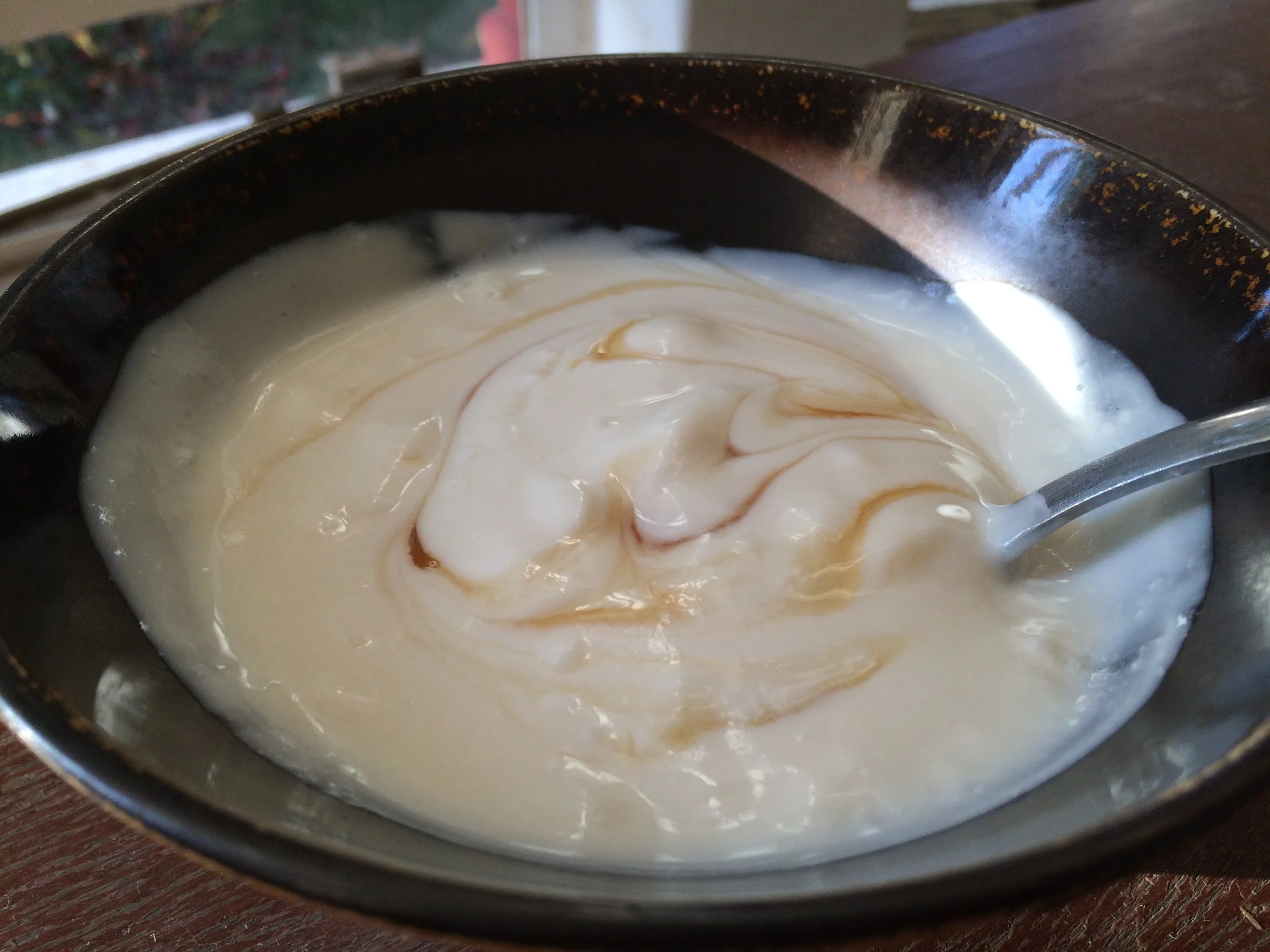In one of my recent posts, I wrote about the many basic fruits and vegetables we cannot find in Cuba. Another thing that we cannot find is decent yogurt. Occasionally, some state-owned markets sell a watery yogurt in an unsightly large tub. There also is something called “soy yogurt” that I have been told is unpalatable. (I'll muster the courage to try it sometime soon, stay tuned.) But rather than going from market to market looking for a sub-par version, I prefer making my own yogurt at home -- and coincidentally in Cuba, I even improved upon my recipe one day when I threw in a common, but often overlooked, ingredient (read to the bottom).
My 2-quart yogurt maker incubates milk at a steady 110 degrees Fahrenheit.
I confess I am a yogurt snob. When I go to the supermarkets in the U.S., I am suspicious of brands advertising themselves as “Greek yogurt” that are 0% fat. (That’s an inherit contradiction.) On visits back to the States, I usually opt for a quart of unadulterated plain whole yogurt rather than little cups filled with sugar and other additives.
I first discovered the beauty of yogurt when I was living and traveling in Asia, of all places, doing research for my second book. Asians have a long history of making yogurt, something that might sound surprising. The yogurt in traditional back alleys of Beijing, China is amazing — thick and smooth, and delicious with a little honey or sugar, and the tradition was passed down generation by generation in Chinese Muslim families. When I traveled through Central Asia, Turkey, and Greece, I discovered even thicker and fresher versions of the dairy product. In Central Asia, it was made from the milk cows that roamed before us over expansive grasslands.
After my trip from Asia to Europe, I began making yogurt on my own, and it’s now a staple that is always in our fridge. It was one of the first foods both of my kids ate as babies, and my toddler son K eats it every morning still, with a touch of honey and a sprinkle of granola, homemade too (recipe to come in a future blog post). We use it as a sour cream substitute, too, since that’s also nonexistent in Cuba. I use a yogurt incubator that I bought on Amazon, the Euro Cuisine. When my family and friends come to visit us, they bring packets of yogurt starter.
My daughter and I stocking up on milk at a not-so-super market in Havana, Cuba.
I have Cuba to thank for better yogurt, ironically. In Cuba, we are used to shortages of milk. Milk does not arrive in the supermarket cold, in nice half gallon containers and or gallon jugs. If it is available at all, it is in vacuum-packed UHT long-life boxes, and when I go shopping with my daughter and happen to come across it, we buy it by the dozens. And because of this shortage, I've had to search for alternatives, like powered milk. I started incorporating powdered milk into my recipe for yogurt, and it works brilliantly, if added to milk in its liquid form. (The fact that I have to say 'milk in its liquid form' is telling, isn't it?) The result is thicker, richer yogurt -- and one that your kids will love, as much as mine do.
Plainly Delicious Homemade Yogurt
1 quart milk at room temperature (whole or semi-skimmed, pasteurized or UHT long-life)
3 cups warm water
1 cup powdered milk (whole preferred, but skim or nonfat works as well)
1 packet of yogurt starter or 6 oz whole plain yogurt
Special Equipment: 2-quart yogurt incubator and an espresso or candy thermometer
Pour milk, water, and powdered milk into a large pot and mix until the powdered milk is well dissolved. Attach the thermometer on the inside of the pot and heat over a medium flame until the thermometer reads 180 degrees Fahrenheit. Turn off the heat and place the pot in a sink filled with cold water. When the temperature of the pot goes down to 110 degrees Fahrenheit, add the yogurt starter and mix thoroughly. Transfer into the yogurt incubator and turn on the incubator. Do not agitate or move the incubator until the yogurt has incubated for at least 8 hours, and up to 16 hours. Place in the refrigerator for at least 4 hours to settle and cool it, then serve.


